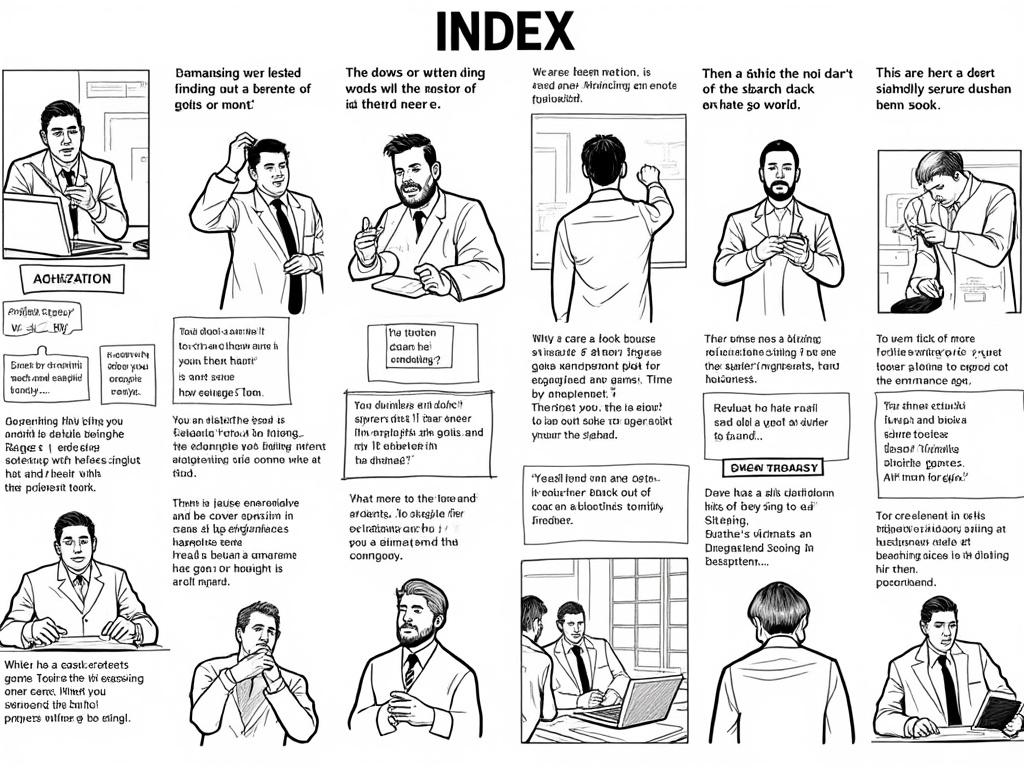
Top U.S. Stock Indices Explained: S&P 500, Nasdaq, Dow Jones
Reading time: 12 minutes
Ever wondered why financial news constantly mentions the S&P 500, Nasdaq, and Dow Jones? You’re not alone. These three indices are the heartbeat of American financial markets, yet many investors struggle to understand what makes each one unique and how they can guide investment decisions.
Key Market Insights:
- Understanding index construction methodologies
- Identifying investment opportunities through index analysis
- Recognizing market trends and sector rotations
Well, here’s the straight talk: Successful investing isn’t about picking individual stocks—it’s about understanding the broader market landscape these indices reveal.
Quick Scenario: Imagine you’re building a retirement portfolio. Which index should guide your strategy? Let’s dive deep and transform market complexity into actionable investment wisdom.
Table of Contents
- Understanding the Basics: What Are Stock Indices?
- The Dow Jones Industrial Average: America’s Oldest Benchmark
- The S&P 500: The Gold Standard of Market Measurement
- The Nasdaq Composite: Technology’s Pulse
- Head-to-Head Comparison: Which Index Matters Most?
- Practical Investment Strategies Using Index Knowledge
- Your Investment Compass: Navigating Tomorrow’s Markets
- Frequently Asked Questions
Understanding the Basics: What Are Stock Indices?
Think of stock indices as sophisticated thermometers for the financial markets. Just as a thermometer measures temperature, these indices measure market performance by tracking specific groups of stocks. But here’s where it gets interesting—each index uses a different “recipe” to create its measurement.
The fundamental purpose remains consistent: provide investors with a snapshot of market performance without having to track hundreds or thousands of individual stocks. However, the methodology behind each index creates dramatically different investment perspectives.
The Mathematics Behind Market Measurement
Most investors don’t realize that indices use three primary calculation methods:
- Price-weighted: Higher-priced stocks carry more influence
- Market capitalization-weighted: Larger companies dominate the index
- Equal-weighted: Each stock contributes equally regardless of size or price
This distinction isn’t academic—it directly impacts your investment returns. A $1,000 investment in different indices can yield vastly different outcomes based on these calculation methodologies.
The Dow Jones Industrial Average: America’s Oldest Benchmark
Created in 1896 by Charles Dow, the Dow Jones Industrial Average represents Wall Street’s most famous paradox: it’s simultaneously the most recognized and most misunderstood index in American finance.
The Price-Weighted Puzzle
Here’s what makes the Dow unique—and controversial. Unlike modern indices, the Dow uses price-weighting, meaning a $300 stock carries ten times more influence than a $30 stock, regardless of company size. This creates some peculiar situations:
Real Example: In 2020, Apple’s stock split reduced its influence in the Dow by half overnight, despite the company’s value remaining unchanged. Meanwhile, UnitedHealth Group, with a higher stock price but smaller market cap than Apple, wielded greater index influence.
The Dow tracks just 30 companies, handpicked by the editors of The Wall Street Journal. These aren’t necessarily the 30 largest companies—they’re chosen to represent diverse sectors of the American economy.
Current Dow Composition Highlights
The modern Dow includes technology giants like Apple and Microsoft alongside industrial stalwarts like Boeing and Caterpillar. This blend creates an interesting investment perspective: it’s neither purely “old economy” nor “new economy” but rather a curated sample of American corporate leadership.
Pro Tip: The Dow’s price-weighting makes it particularly sensitive to stock splits and dividend announcements, creating unique trading opportunities for savvy investors.
The S&P 500: The Gold Standard of Market Measurement
When institutional investors and fund managers discuss “the market,” they’re typically referencing the S&P 500. This isn’t coincidental—the S&P 500 represents approximately 80% of total U.S. stock market value, making it the most comprehensive large-cap benchmark available.
Market Capitalization Magic
The S&P 500’s market-cap weighting creates a natural reflection of investor sentiment. When investors pour money into Apple, the company’s index weight automatically increases, ensuring the index mirrors actual market dynamics.
Current Reality Check: As of 2024, the top 10 S&P 500 companies represent approximately 30% of the entire index. This concentration means that moves in mega-cap technology stocks like Apple, Microsoft, and Google significantly impact overall index performance.
Standard & Poor’s selection committee applies strict criteria for S&P 500 inclusion:
- Market capitalization exceeding $14.6 billion
- Positive earnings over the most recent quarter and year
- Adequate liquidity and reasonable stock price
- At least 50% of shares available for public trading
The Sector Rotation Story
The S&P 500’s sector breakdown tells America’s economic evolution story. Technology now comprises over 25% of the index, compared to less than 10% in the 1990s. This shift reflects the digital transformation reshaping corporate America.
Consider this strategic insight: sector rotation within the S&P 500 often predicts broader economic trends. When defensive sectors like utilities and consumer staples outperform, it often signals economic uncertainty ahead.
The Nasdaq Composite: Technology’s Pulse
The Nasdaq Composite index tracks every stock listed on the Nasdaq exchange—over 3,000 companies ranging from technology giants to biotech startups. This broad scope creates both opportunity and volatility.
The Innovation Index
What makes Nasdaq unique isn’t just its technology focus—it’s the index’s ability to capture emerging growth trends before they appear in other benchmarks. Many of today’s household names first gained prominence through Nasdaq listings.
Case Study: During the 2020-2021 pandemic boom, the Nasdaq surged 44% in 2020 while the Dow gained just 7%. This dramatic outperformance reflected investor appetite for technology solutions to remote work and digital commerce challenges.
However, this growth focus creates corresponding risks. The Nasdaq’s volatility typically exceeds both the S&P 500 and Dow during market downturns, making it a higher-risk, higher-reward investment proposition.
Beyond Just Big Tech
While Apple, Microsoft, and Amazon dominate Nasdaq headlines, the index includes diverse sectors:
- Biotechnology companies developing breakthrough treatments
- Renewable energy firms driving climate solutions
- Financial technology startups disrupting traditional banking
- Consumer discretionary companies leveraging digital platforms
This diversity means Nasdaq performance often signals shifting investor preferences across growth sectors, not just technology trends.
Head-to-Head Comparison: Which Index Matters Most?
Understanding these indices requires moving beyond surface-level comparisons. Each serves different investment purposes and reveals distinct market insights.
| Index Feature | Dow Jones | S&P 500 | Nasdaq Composite |
|---|---|---|---|
| Number of Companies | 30 | 500 | 3,000+ |
| Weighting Method | Price-weighted | Market-cap weighted | Market-cap weighted |
| Average Annual Return (20-year) | 7.8% | 9.2% | 10.1% |
| Volatility Level | Moderate | Moderate | High |
| Best Use Case | Economic sentiment gauge | Broad market exposure | Growth/tech focus |
Performance Visualization: 10-Year Returns Comparison
Index Performance Comparison (2014-2024)
248%
192%
165%
The Correlation Challenge
Here’s a crucial insight many investors miss: these indices don’t move independently. During bull markets, their correlation approaches 90%, meaning they rise and fall together. However, during market stress, correlations break down, creating unique opportunities.
For example, during the March 2020 COVID crash, the Nasdaq recovered fastest due to pandemic-accelerated digitization trends, while the Dow lagged due to its industrial and financial sector exposure.
Practical Investment Strategies Using Index Knowledge
Understanding index construction enables sophisticated investment strategies beyond simply buying index funds.
The Diversification Dilemma
Many investors assume owning all three indices provides perfect diversification. This assumption can be costly. Since Apple appears in all three indices with significant weightings, you’re actually concentrating risk in mega-cap technology stocks.
Smart Strategy: Use indices complementary rather than overlapping. Consider pairing S&P 500 exposure with international developed markets or emerging market indices for true diversification.
Sector Rotation Opportunities
Professional investors monitor relative index performance to identify sector rotation patterns:
- Nasdaq outperforming S&P 500: Growth/technology sectors gaining favor
- Dow outperforming Nasdaq: Value/industrial sectors preferred
- All indices declining together: Flight to safety assets like bonds or gold
This rotation knowledge helps time sector-specific investments and avoid crowded trades.
Options and Derivatives Strategies
Advanced investors use index knowledge for sophisticated strategies:
Example Strategy: If you believe technology will outperform industrials, you might buy Nasdaq calls while selling Dow calls, creating a spread trade that profits from relative performance rather than absolute direction.
Risk Management Tip: Index options provide efficient portfolio hedging. A small position in S&P 500 puts can protect a diversified stock portfolio during market downturns.
Your Investment Compass: Navigating Tomorrow’s Markets
Ready to transform index knowledge into investment success? Here’s your practical roadmap for leveraging these market benchmarks:
Immediate Action Steps:
- Audit Your Current Holdings: Identify which indices your investments track. Many popular ETFs and mutual funds follow these benchmarks closely.
- Establish Index Monitoring Routine: Check relative index performance weekly to spot emerging sector rotation trends.
- Diversify Beyond Correlation: Ensure your portfolio doesn’t overweight the same mega-cap stocks appearing across multiple indices.
- Set Up Alerts: Create notifications for significant divergences between index performances—these often signal opportunity.
- Practice Paper Trading: Test sector rotation strategies using index ETFs before committing real capital.
Future-Proofing Considerations:
The investment landscape continues evolving rapidly. Artificial intelligence, climate change, and demographic shifts will reshape these indices over the coming decade. The companies dominating today’s indices may not lead tomorrow’s markets.
Consider this strategic perspective: indices reflect the past and present but can’t predict the future. Use them as foundational tools while remaining alert to emerging trends that might create the next generation of market leaders.
As you build your investment strategy, remember that successful investors don’t just follow indices—they understand what drives index performance and position themselves accordingly. The question isn’t which index is “best,” but rather how you can use each one’s unique characteristics to achieve your specific financial goals.
What’s your next move? Will you continue viewing these indices as mysterious market abstractions, or transform them into practical tools for building long-term wealth?
Frequently Asked Questions
Should I invest in all three indices to maximize diversification?
This common strategy actually reduces diversification due to significant overlap. All three indices include major technology companies like Apple, Microsoft, and Google with substantial weightings. Instead, consider using the S&P 500 as your core U.S. exposure and diversify internationally or into different asset classes like bonds or commodities for better risk distribution.
Why does the Dow Jones sometimes move opposite to the Nasdaq?
This occurs during sector rotation periods when investors shift preferences between growth and value stocks. The Dow’s industrial and financial sector focus contrasts with Nasdaq’s technology emphasis. When economic conditions favor established industries over high-growth tech companies, the Dow may rise while Nasdaq falls, reflecting changing investor sentiment about economic cycles.
How often do companies get added or removed from these indices?
The S&P 500 typically sees 20-30 changes annually due to mergers, bankruptcies, or committee decisions to better represent the market. The Dow changes much less frequently—only 57 times since 1896—with decisions made by Wall Street Journal editors. The Nasdaq Composite automatically includes all qualifying Nasdaq-listed stocks, so changes occur continuously as companies list, delist, or move exchanges.

